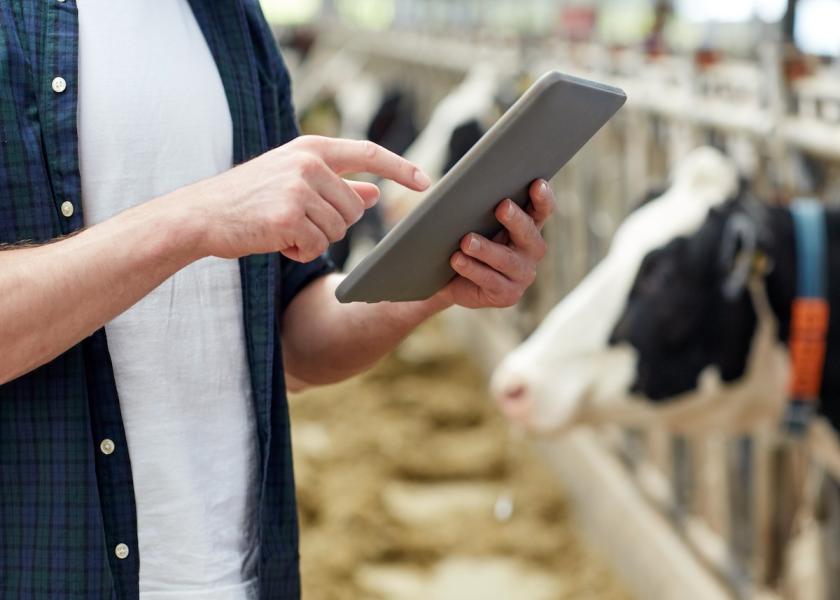New Dairy Cattle Nutrition Model Coming From Cornell Soon

For more than 40 years, the Cornell Net Carbohydrate and Protein System (CNCPS) has been both an academic and commercially applied nutrition model to predict requirements, feed utilization, animal performance and nutrient excretion for dairy and beef cattle.
The CNCPS is a “living model,” and is routinely updated using accumulated knowledge about feed composition, digestion, and metabolism in supplying nutrients to meet requirements. For the past 13 years, Cornell researchers have been developing the latest, highly anticipated CNCPS version 7, which will be an update to the current version, 6.5.5.
Dr. Mike Van Amburgh, Professor of Animal Science at Cornell, has been leading the team of researchers who have been steadfastly working toward the launch of CNCPSv7. Van Amburgh expects the upgraded model will be commercially available in the second half of 2024. Among the highlights of the update are:
- A “mouth-to-rectum” model. Version 7 will feature a “revised dynamic structure” that accounts for segmented digestion dynamics in the rumen, abomasum, small intestine, and large intestine.
- A nitrogen-based model. “We would like to eliminate the use of the term ‘crude protein,’” stated Van Amburgh. “Crude protein as a percentage can be quantified, but each amino acid has its own nitrogen content.” He said using grams of nitrogen per Mcal of metabolizable energy allows for the delineation of each essential amino acid’s nitrogen contribution, versus less-precise crude protein percentage.
- A new model constructed with the goal of improving predictions of rumen function; aNDFom digestibility; essential amino acid supply and their individual behavior and contributions; and nitrogen supply.
- New estimates of amino acid requirements on an energy basis along with a full urea and nitrogen recycling sub model to improve nitrogen use efficiency.
- New accommodation of dairy cow feed intake patterns.
- A new estimation of the contribution of protozoa to rumen microbial flow.
- A complete lifecycle model that includes requirements and ration structure for neonatal calves through weaning; followed by heifer development; and finally, the lactating cow.
Van Amburgh said as Cornell researchers developed the model update, incorporation of protozoa growth and yield; endogenous protein supply and digestibility; recycled urea nitrogen; and intestinal digestibility all together provided new insights into amino acid supply and nitrogen efficiency.
However, despite all of the discoveries of essential amino acid (EAA) behavior and dietary contributions, Van Amburgh cautioned that diets still cannot be formulated on EAA balancing alone. “Our updated knowledge of EAAs is exciting, but we cannot forget about the non-essential amino acids,” he advised. “Even though they are ‘non-essential,’ they are still required in the cow’s diet, and for that reason, we still need to formulate on the basis of metabolizable protein.”
The Cornell researchers are developing the new CNCPS version with a triad of objectives: (1) improve animal health and productivity; (2) reduce resource use; and (3) protect the environment.
When the model is launched, Van Amburgh said a written manual will also be published featuring case studies to walk users through the model’s capabilities, and what to do with the information it provides. You can hear Van Amburgh and his colleagues describe and discuss CNCPSv7 on a webinar sponsored by Balchem; at a presentation from the 2023 American Dairy Science Association Annual Conference; and on a webinar sponsored by Adisseo.
For more on nutrition, read:
- 6 On-Farm Priorities to Help Drive Success This Year
- U.S. Harvest Analysis Reveals Variable Mycotoxin Risk, Alltech Reports
- Blame it on the Nutritionist
- Interest Growing in Inulin for Lactating Dairy Rations
- The Sweet Spot for Oral Calcium Supplementation
- New Federal Feed Additive Legislation Proposed







